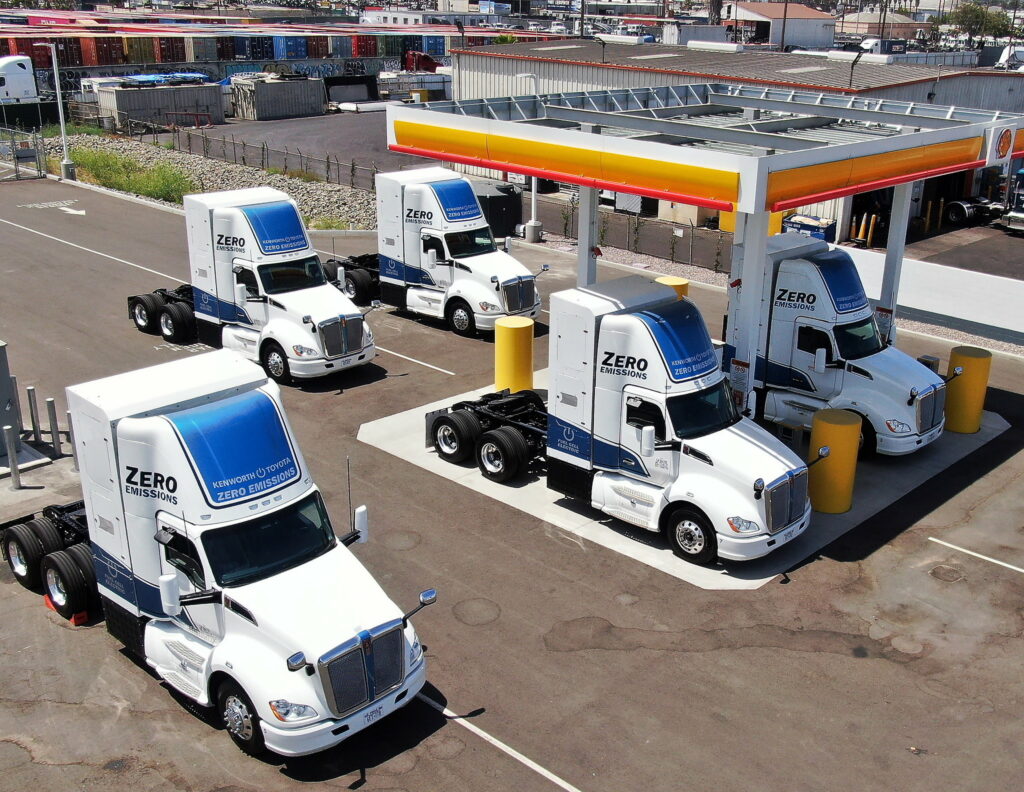ZEV market to hit 180,000 annual units by 2040: Kenworth
Kenworth predicts zero-emission truck sales will enjoy “steady growth” through this decade, with U.S. sales reaching a projected 180,000 units per year by 2040 – but that will depend on success with longhaul applications.
“My 2040 estimate of 180,000 units sold per year indicates that we will have greater than 70% sales mix of [zero-emission vehicles] when we are successful with longhaul solutions complementing the wide range of shorthaul electric truck models offered today,” chief engineer Joe Adams said Tuesday in a speech to the Move America event in Texas.

Four factors are driving the zero-emissions technologies of today, he said, citing regulatory changes, companies with sustainability initiatives, an improving total cost of ownership, and technology readiness.
“In the U.S., we have competing federal and regional laws that dictate greenhouse gas and diesel emissions. The federal regulations fluctuate as a result of the changing political environment, and as of now, climate policy seems to be the overarching justification for new regulations,” he said. And still-stricter California Air Resources Board (CARB) regulations build on that.
“Recent CARB regulations have focused on ZEV sales. In 2024, truck OEMs will need to sell 9% ZEV trucks and 5% ZEV tractors or rigid models to be able to continue selling diesel powertrains in the state. These sell side requirements increase in 2027 to 20% and 15%, respectively.”
About 15 states are looking to adopt the CARB targets in 2024 or shortly after.
“Corporate sustainability objectives continue to grow to the point that many businesses are setting macro level objectives like net carbon neutral operations,” he added, noting there’s also a market for green technology.
In terms of the total cost of ownership, Adams pointed to the energy costs per mile. “For most customer routes, the daily energy bill will be 50% lower with a battery electric truck,” he said. Fewer moving parts and a lack of aftertreatment systems will help as well.
“We estimate that maintenance will be 30 percent lower with BEVs,” Adams said of battery-electric vehicles.
The technology has also evolved over the last decade, he added, referring to the durability, temperature ranges and nominal voltage levels of today’s e-motors. So, too, are there more accessories and better batteries.
When it comes to promises for longhaul applications, he pointed to hydrogen-electric trucks that offer ranges of 300-500 miles or more, as well as refueling times that come in under 15 minutes.
“Zero-emissions trucks are changing the way we do business,” he said, “and more importantly having a positive impact on people. ZEF truck drivers will have some of the most advanced technology in the transportation industry at their hands with quieter cabs, increased driving performance, advanced connectivity, and less downtime with battery-electric powertrains.”
Have your say
This is a moderated forum. Comments will no longer be published unless they are accompanied by a first and last name and a verifiable email address. (Today's Trucking will not publish or share the email address.) Profane language and content deemed to be libelous, racist, or threatening in nature will not be published under any circumstances.